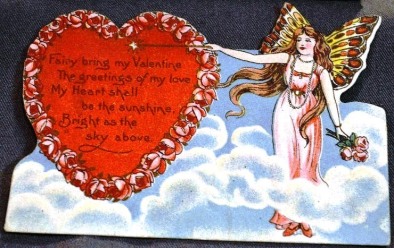Legend tells us that St. Valentine was an early Christian martyr who was imprisoned and sentenced to death for secretly marrying young soldiers despite Roman Emperor Claudius II’s ban on the practice. Before being executed, Valentine befriended his jailor’s daughter and wrote her a note signed “From Your Valentine.” From these fabled beginnings, the tradition of sending letters on Valentine’s Day began. In the 1700s, people sent letters on special stationary on the holiday, and the practice transformed into sending handmade cards by the early nineteenth century. Cards began to be commercially produced in England in the 1800s. Esther Howland, an 1847 Mount Holyoake graduate who was supposedly inspired after receiving an ornate English card, began to make and sell her own, which began the American Valentine industry. Victorian era cards were often elaborate, including some that were three dimensional. The practice of mailing cards to sweethearts and friends has clear roots in the 1800s, and the types of cards that people sent can tell us about the images and sentiments that were popular during different decades.
The Pink Palace has a small collection of Valentines from the early twentieth century. The bouquet-shaped greeting card has six panels that are connected with a white satin ribbon. When closed, it resembles a spray of pansies. This card was sent to Nema Mitchell of Craighead, Arkansas, by her father in 1904 before her marriage. The remainder of the cards shown here are from the 1920s.


If you would like to send a Victorian e-Valentine to your sweetheart, you can visit the Lilly Library of the Indiana University Libraries, Bloomington: http://www.indiana.edu/~liblilly/cardsharp/index.php


Reblogged this on Ideas and Thinks and commented:
I wrote a post about Valentine’s Day card for the Pink Palace blog. Check it out: